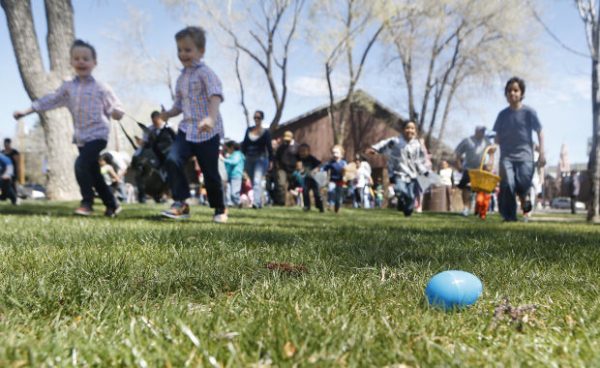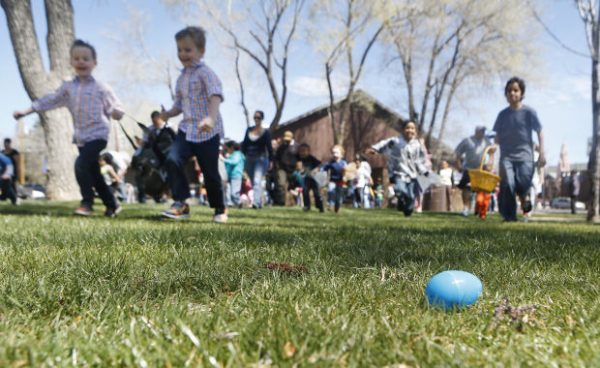By mid-March, signs of spring are in the air in the Northland. Stretches of warm days get us thinking about stowing the parkas and pulling out the Hawaiian shirts. Girl Scout cookies make their triumphant return to our lives and in normal times, when a virus isn’t spreading across the world, Spring Training baseball games are played daily mere hours away.
View from Mars Hill: Astronomy’s moveable feast: When Easter happens – Arizona Daily Sun
View from Mars Hill: Astronomy’s moveable feast: When Easter happens

Children run through Wheeler Park during the 2015 Easter egg hunt hosted by the American Legion.
Taylor Mahoney/Arizona Daily Sun
In the stores, clutches of candy eggs — if not toilet paper — engulf shelves, reminding us that Easter is on its way. For many of us, this then means checking our calendar to figure out just when Easter falls this year, for it is a moving target and never on the same date in consecutive years.
Of all the major holidays we recognize in the Unites States, in fact, none requires as much calendar checking as Easter. This celebration of renewal may fall on any of 35 possible dates and can’t even claim a home month; in some years it lands in March while in others it extends into April. The reasons for this inconsistency span centuries and involve astronomical phenomena, religious customs, and evolving civil calendars.
We commonly remember the date of Easter as the first Sunday after the first full moon on or after the Vernal Equinox. But alas, this purely astronomical definition is not quite accurate due to a few problems.
Nearly 1,700 years ago, religious leaders began creating several parameters to define Easter: first, the Vernal Equinox will be on March 21 (even though in reality it can also land on March 19 or 20). Second, Easter must be on a Sunday, and that Sunday must be the first one after the paschal full moon.
A paschal full moon is defined as taking place on the 14th day of a lunar month and occurs on or directly after March 21. The paschal full moon is based on ecclesiastical tables, rather than astronomical observations. Because of this, the paschal full moon does not necessarily correspond exactly to the time of the astronomical full moon.
Taking all of these parameters into consideration, we find that Easter can fall on a number of different days, ranging from as early as March 22 to as late as April 25 (April 12 this year). Moreover, the dates follow a sequence that repeats every 5,700,000 years or so in our current Gregorian calendar. Of course, for those who don’t follow the Gregorian calendar, or for groups including certain Eastern Orthodox churches that don’t follow the above definition of Easter, the date for this special day may vary in any given year.
Because of its fluctuating dates Easter is known as a moveable feast; not the Paris version of Hemingway but the religious variety describing a feast day that occurs on different days each year.
No matter how the date of Easter has been defined, one thing that has remained consistent through the years is its celebration in the spring, that time of rebirth and renewal, resurrection and the restoration of life, Girl Scout cookies and baseball. In this turbulent year, this season of hope is more anticipated than ever.








